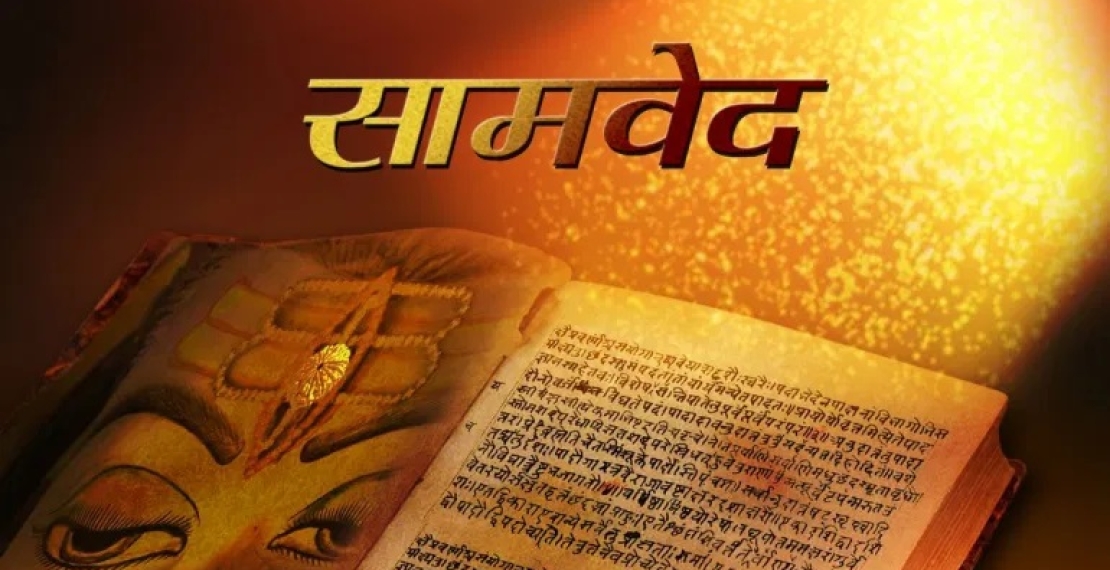The words of Rig Veda put to music, and are to be sung rather than to just be read or recited.
Sama Veda, also the Veda of Melodies and Chants, is the third in the series of the four principle scriptures of Hinduism – Four Vedas. The Sama Veda, divided into two major parts, first to include the four melody collections, or the Saman, the songs and the latter the Arcika, or the verse books a collection (Samhita) of hymns, portions of hymns, and detached verses. A liturgical text, relating to public worship, all but 75 verses of the total 1875 is derived from the Rig Veda.
The ancient core Hindu scripture, of which only three recessions, the early edited versions have survived, the research scholars point out its existing compilations to have been originated in the post-Rigvedic period, dating approximately around 1200 or 1000 BCE, also the period being contemporary to Atharvaveda as well as Yajur Veda. But at the same time, many scholars are quick to point out that no specific date of creation can be attributed to the Vedas, which reconciles with the claim of ardent believers of the Hindu dharma of the Veda being Apauruṣeya; meaning, not of a man or impersonal and also not belonging to a particular author.
Widely referred to as the ‘Book of Songs’, it is derived from two words, Saman, of Sanskrit, meaning Song and Veda, meaning Knowledge. It is the Sama Veda, which has served as the principal roots of the classical Indian music and dance tradition, and proudly the tradition boasts itself as the oldest in the world. The verses of Sama Veda, as the tradition had followed, is sung using specifically indicated melodies called Samagana by Udgatar priests at rituals dedicated to different diets.
As it is the words of Rig Veda put to music, no wonder, alike the Rigveda, the early sections of Samaveda typically begin with singing the hymns of Rig Vedic deities, Indra, a heroic deity and the king of the highest heaven called Saudharmakalpa who slain his enemy Vatra, Agni- the sacrificial fire, Soma, the sacred potion or the plant which was a fundamental offering of the Vedic sacrifices and Ishwara, the supreme god-just to mention a few; but in the latter part shifts to abstract speculations and philosophy, the nature and existence of the universe and God himself are questioned and so are the social and religious duties of a man in the society. The purpose of Samaveda clearly is liturgical.
Two of the 108 Upanishads still extant are embedded in the Sama Veda, namely; Chandayoga Upanishad and Kena Upanishad. Upanishads, in a way the essence of Vedas, are ancient Sanskrit texts that contain some of the central philosophical concepts and ideas of Hinduism and are also shared in some other religions like Buddhism and Jainism. The Chandayoga Upanishad speculates about the origin of the universe and about space and time. Three proficient men in their Udgithas or chanting put forward some logical speculations even modern science could not out rightly reject. The Kena Upanishad tells us about how every man born has an innate longing for spiritual knowledge and that bliss comes only from spiritual attainment.
To quote the exact words of V. Raghavan, a Sanskrit scholar, and musicologist,
“Our music tradition [Indian] in the North as well as in the South, remembers and cherishes its origin in the Samaveda… the musical version of the Rigveda.”
Such has been the influence of Sama-veda on Indian classical music and dance. So much so that the very essence of classical Indian music and dance tradition is rooted in the sonic and musical dimensions of the Sama-Veda itself. The Samaveda, in addition to singing and chanting, mentions instruments and also the specific rules and regulations of playing them, so as to preserves the sanctity of those ancient instruments. If one were to summarize the significance of the Sama Veda in a single line, Sama Veda, in contemporary Hinduism, has been a reminder of the majestic ancient cultural heritage and a point of pride for Hindus; not to mention that it still finds its usage in today’s society.

